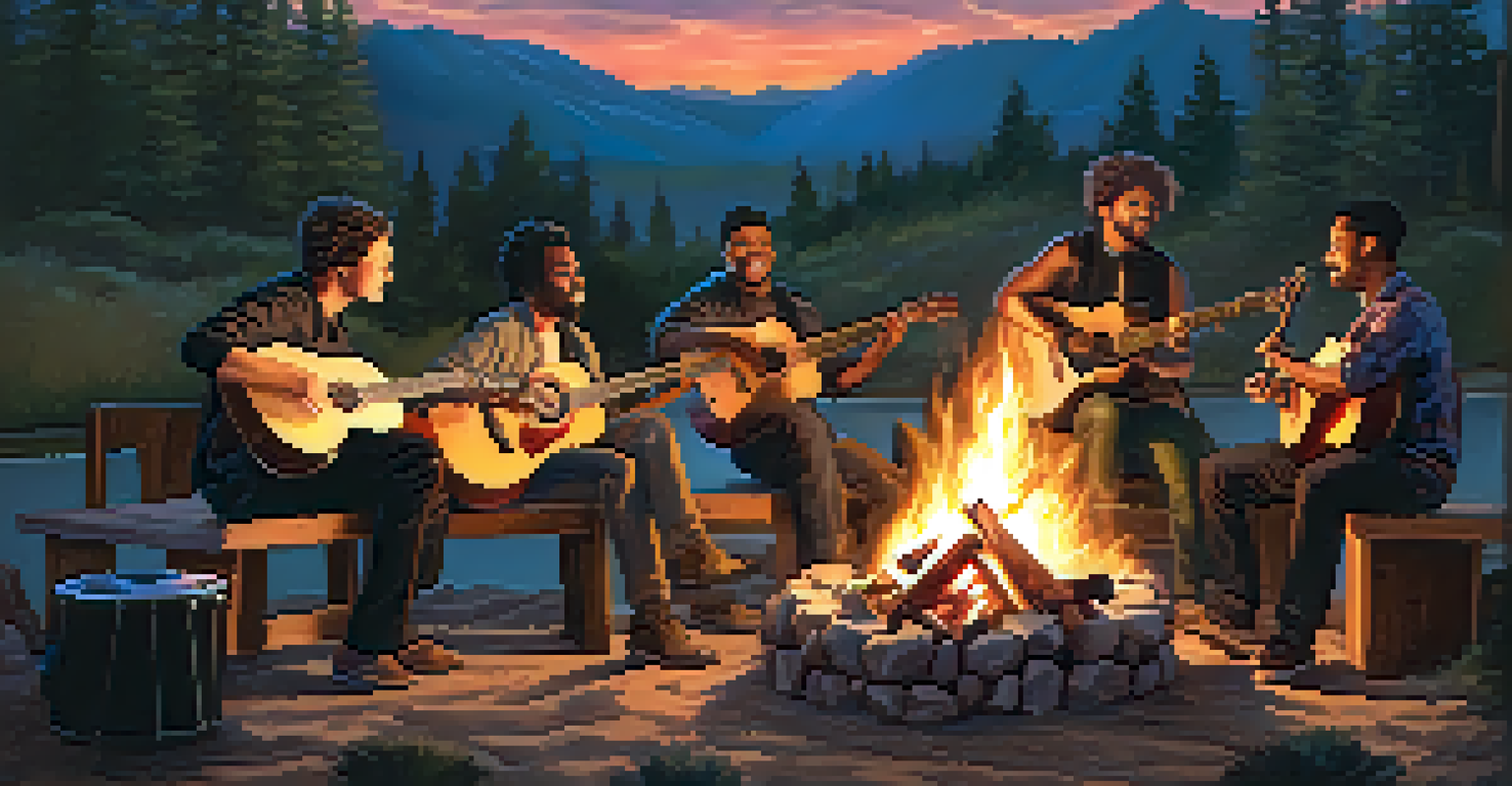Exploring the History of Guitar Tablature and Its Use Today

What is Guitar Tablature and Why It Matters
Guitar tablature, or tab, is a musical notation system specifically designed for guitar players. Unlike traditional sheet music, which uses staff and notes, tablature uses a simple format of lines and numbers to indicate where to place your fingers. This makes it accessible for beginner musicians who may find standard notation daunting.
Music is the shorthand of emotion.
The beauty of guitar tab lies in its straightforwardness. Each line represents a string on the guitar, and the numbers indicate which fret to press down. This direct approach allows guitarists to quickly learn their favorite songs without needing extensive music theory knowledge.
Furthermore, guitar tablature has become a universal language among musicians. Whether you're jamming with friends or teaching a student, tab provides a common ground for communicating music in a way that is both efficient and effective.
A Brief History of Guitar Tablature
The roots of guitar tablature can be traced back to the 16th century, during the Renaissance, when lute players used a form of tablature to notate their music. This early system laid the groundwork for what would evolve into the modern guitar tab we know today. It was particularly useful for string instruments, where finger placement is crucial.

By the 19th century, tablature began to gain popularity as guitar music became more widespread. The emergence of the classical guitar and the rise of folk music contributed to its growth, as musicians sought ways to share their songs with others without formal training.
Guitar Tablature Simplifies Learning
Guitar tablature makes it easy for beginners to learn songs quickly without needing extensive music theory knowledge.
With the advent of the 20th century and the explosion of genres like rock and blues, guitar tablature found its niche. It became a vital tool for aspiring guitarists who wanted to learn iconic riffs and solos from their favorite bands, making music more accessible to the masses.
The Evolution of Tablature Formats
As technology advanced, so did the ways we interact with guitar tablature. Initially written by hand, tabs started appearing in print and on early music websites in the 90s. This digital shift made it easy for musicians to share their compositions and arrangements online.
The guitar is a miniature orchestra in itself.
Today, guitar tablature can take many forms. From simple text files to sophisticated software that displays dynamic tabs with audio playback, the evolution has made it easier than ever for musicians to access and learn music. Websites and apps now offer vast libraries of tabs, catering to every genre imaginable.
The ability to create and share tabs has fostered a global community of guitarists. Now, anyone can contribute their own interpretations of songs, leading to a rich tapestry of musical creativity that continues to grow and evolve.
Guitar Tablature vs. Standard Notation
While guitar tablature is incredibly popular, it's essential to understand its differences from standard musical notation. Standard notation conveys a wealth of musical information, including rhythm, dynamics, and articulation, which can be lost in tab. For guitarists aiming for a deeper understanding of music, learning standard notation can be highly beneficial.
However, the simplicity of tablature allows for quicker learning. Many guitarists prefer tabs because they can jump straight into playing without deciphering complex symbols. This is particularly advantageous for beginners who may feel overwhelmed by traditional sheet music.
Tablature's Rich Historical Roots
Guitar tablature has evolved from 16th-century lute notation to a widely used format that democratizes music learning.
Ultimately, both tablature and standard notation have their place in a musician's toolkit. While tabs can help you learn songs quickly, understanding standard notation can enhance your overall musicality and open doors to more advanced playing techniques.
Guitar Tablature in Modern Music Education
In today’s music education landscape, guitar tablature plays a significant role. Many teachers use tabs to introduce students to playing the guitar because of its accessibility. This method allows students to start playing songs almost immediately, which can boost their confidence and keep them motivated.
Moreover, online platforms and video tutorials frequently utilize tablature to teach songs. This modern approach resonates with younger generations who are accustomed to learning through digital media. With a wealth of resources available, students can find tabs for virtually any song they want to learn.
However, educators often encourage students to complement their learning with music theory. This balanced approach can deepen their understanding of the instrument and improve their overall musicianship, ensuring they not only play songs but also understand the music they create.
The Impact of Technology on Tablature
Technology has significantly transformed how guitarists interact with tablature. With the rise of apps and online platforms, musicians can now access an infinite library of tabs at their fingertips. This instant access encourages exploration and experimentation with different styles and techniques.
Additionally, software programs allow users to create and share their own tabs easily. These tools often include features like playback and tempo adjustments, making it easier to learn complex pieces. This level of interactivity has revolutionized the learning process for guitarists of all skill levels.
Technology Enhances Tablature Access
Modern technology provides instant access to a vast library of guitar tabs, fostering a global community of musicians.
Moreover, social media has created a platform for guitarists to share their unique interpretations and compositions. This sharing culture not only promotes collaboration but also inspires creativity, allowing musicians to connect and learn from each other in ways that were previously unimaginable.
The Future of Guitar Tablature
Looking ahead, the future of guitar tablature seems bright. As technology continues to evolve, we can expect even more innovative tools and resources for guitarists. Virtual reality and augmented reality could soon provide immersive learning experiences, allowing musicians to practice in dynamic environments.
Furthermore, the integration of artificial intelligence into music education could lead to personalized learning experiences. AI could analyze a guitarist's playing and offer tailored tab suggestions, helping them progress at their own pace and focus on their unique interests.

Ultimately, while the format of guitar tablature may evolve, its core purpose will remain the same: to make music accessible and enjoyable for everyone. As more people pick up the guitar, the legacy of tablature will continue to play a vital role in shaping the music landscape.